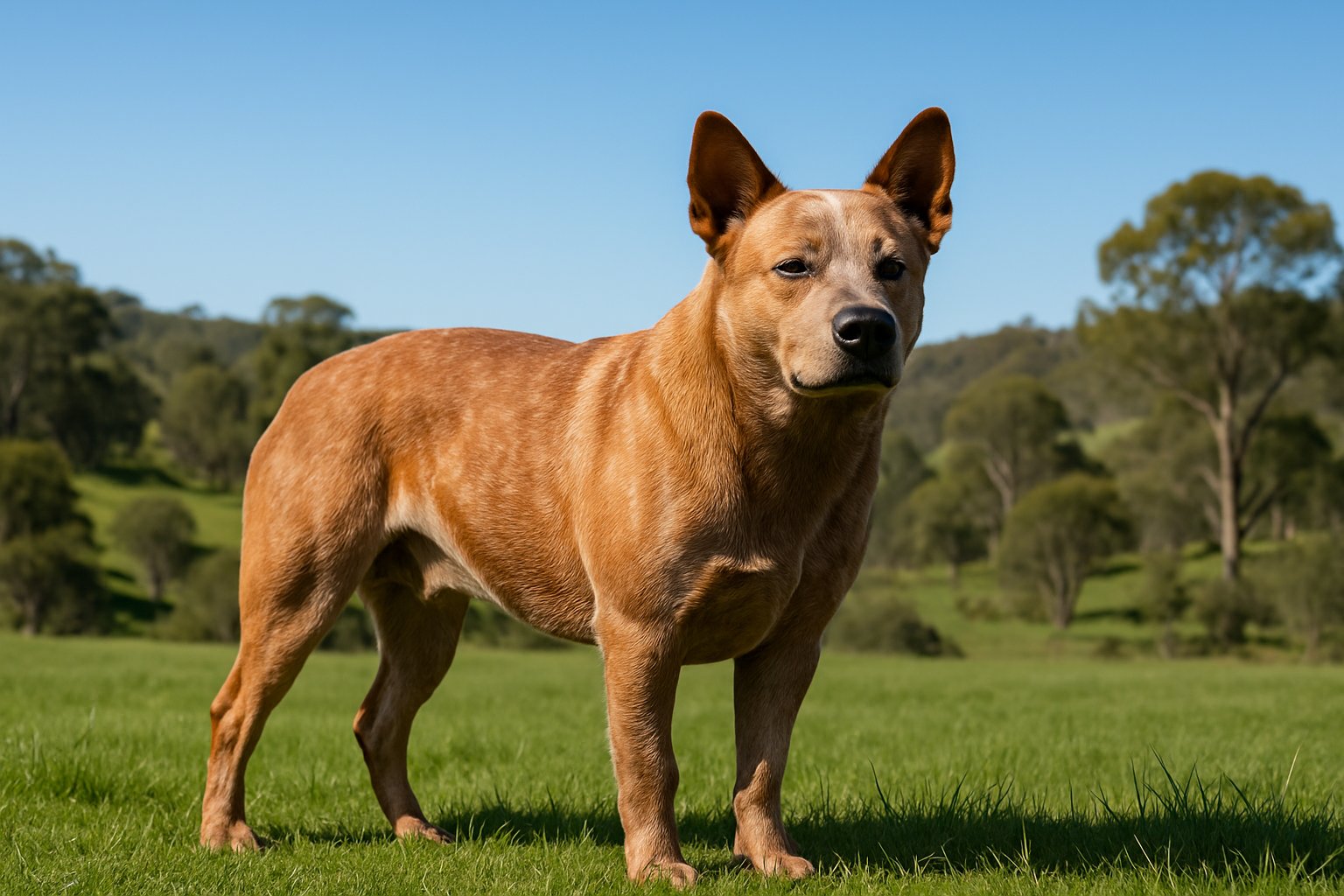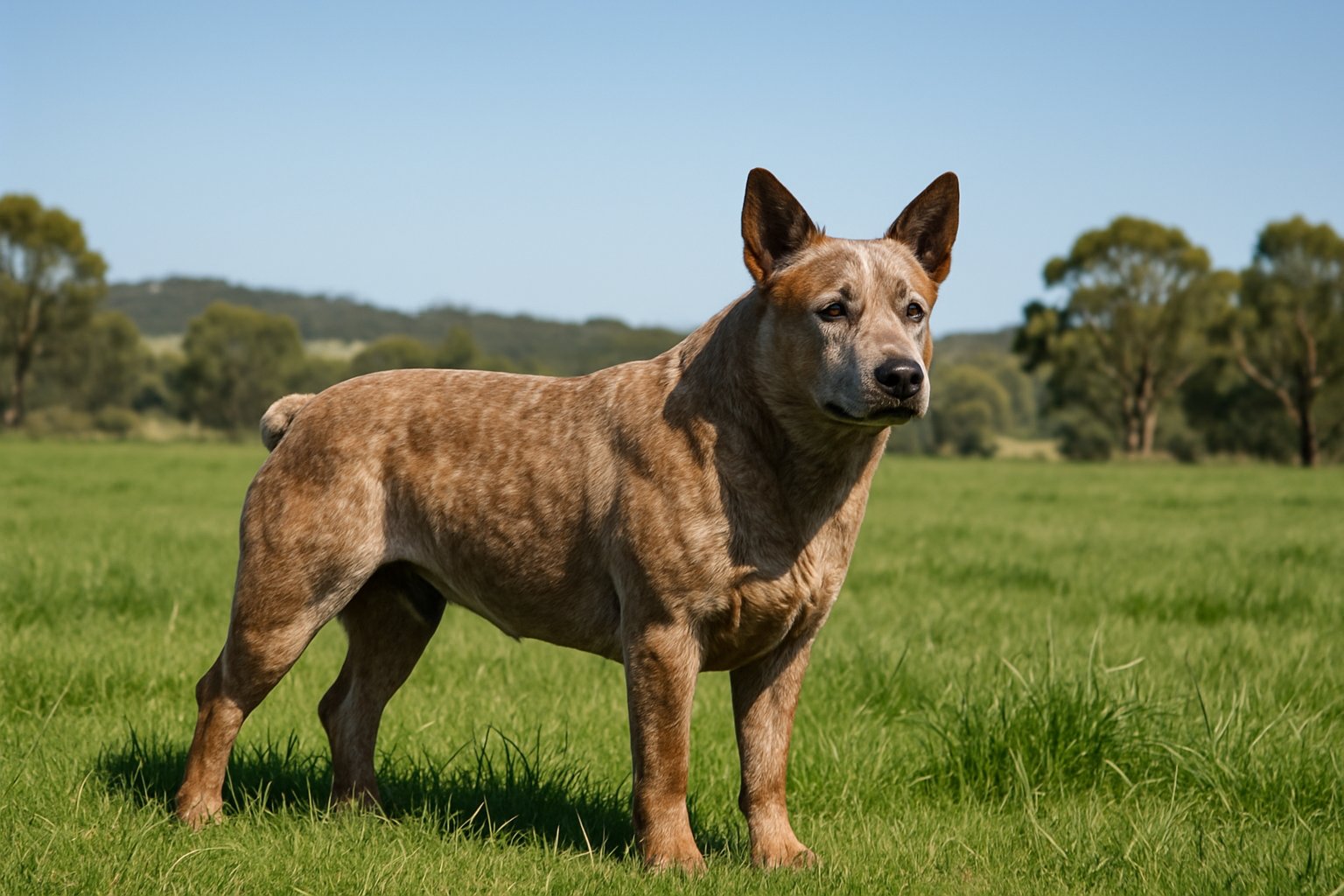If you are interested in unique dog breeds, the Australian Stumpy Tail Cattle Dog has many features worth knowing about. Learning key facts about this breed will help you understand its history, personality, and special traits.
Whether you are thinking about getting a Stumpy Tail or just want to learn more, these facts will give you a clear picture of what makes this Australian breed stand out from the rest.
1. Originating in the rugged Australian outback
The Australian Stumpy Tail Cattle Dog comes from Australia’s vast and harsh outback. This breed started its journey with early British settlers who brought working dogs to the country in the 1800s. You will find that these dogs were bred specifically to herd cattle. Their job was to help move livestock across difficult and rough land, making them a valuable part of farming life.

2. Noted for its naturally short or absent tail
- When you see an Australian Stumpy Tail Cattle Dog, the first thing you’ll notice is its unique tail. Unlike many other breeds, these dogs have a tail that is naturally short or sometimes completely missing.
- This feature is not the result of docking. Instead, their tail is a result of genetics and selective breeding. Most Stumpies will have a tail that appears “stumpy” and is much shorter than you might expect.
- Having a short or absent tail makes the breed easy to tell apart from the similar-looking Australian Cattle Dog, which usually has a long tail unless it has been docked.
- The tail trait helps the breed stand out and is part of what makes Stumpies unique among working dogs. You won’t find many breeds with this kind of naturally occurring feature. The American Kennel Club also highlights that the short tail is one of this breed’s most recognized characteristics.
3. Recognized by United Kennel Club in 2010
- You might be interested to know that the Australian Stumpy Tail Cattle Dog earned recognition from the United Kennel Club (UKC) in 2010. This was an important step for the breed in getting noticed internationally by dog registries.
- Before this, the breed had already been valued in Australia for its herding skills and working ability. Recognition by the UKC meant that the breed could take part in official events and competitions outside its home country.
- While it is recognized by the UKC, the Australian Stumpy Tail Cattle Dog is not recognized by the American Kennel Club. Still, this UKC recognition helps increase the breed’s exposure and gives you more opportunities if you wish to show or compete with your dog.
4. Provisionally accepted by FCI since 2005
If you are interested in dog breeds recognized by official organizations, you should know that the Australian Stumpy Tail Cattle Dog has been provisionally accepted by the Fédération Cynologique Internationale (FCI) since 2005. This means the breed is included in the FCI’s list of recognized breeds, but full recognition is still pending. The FCI is an international group that sets standards for dog breeds around the world. By being provisionally accepted, the Australian Stumpy Tail Cattle Dog is acknowledged on an international stage while more information about the breed is collected and reviewed.
5. Compact and sturdy build ideal for herding
When you look at an Australian Stumpy Tail Cattle Dog, you’ll notice its strong and compact body. This breed is medium-sized, usually weighing between 35-50 pounds and standing around 17-20 inches tall at the shoulder. Their natural bobtail is short, which helps them move quickly without getting caught on anything. The sturdy build makes them well-suited for long days of herding livestock. Their muscles are well-developed, which gives them the power and agility needed to keep up with cattle across rough terrain. The breed is fast and nimble, qualities that make them valuable on farms.
6. Coat comes in mottled red and blue varieties
If you look at an Australian Stumpy Tail Cattle Dog, you’ll notice its coat stands out. This breed comes in two main colors: red and blue. The coat isn’t just a plain color—it usually has a unique mottled or speckled pattern. Red stumpy tails have light to dark red markings all over their bodies. You might see some solid patches, but spots and mottling are more common. Blue stumpy tails have black and white hairs mixed together, which gives their fur a blue-gray look.
7. Known for high energy and exercise needs
You can expect the Australian Stumpy Tail Cattle Dog to be full of energy. This breed is not calm or laid-back. It was originally bred for herding cattle, so movement and activity are a big part of what drives them. Daily exercise is important for their health and happiness. A short walk is not enough. They need plenty of room to run and play, so a large, fenced yard works best.
8. Exhibits sharp intelligence and problem-solving
You will notice that the Australian Stumpy Tail Cattle Dog is one of the most intelligent herding breeds. This breed was developed to think on its feet and adapt quickly to new situations. Many owners find that their dogs can learn commands after just a few repetitions. Their quick learning makes training sessions go smoothly.
9. Highly loyal and forms strong family bonds
You can expect an Australian Stumpy Tail Cattle Dog to be very loyal. This breed often creates a deep connection with its family and prefers to stay close to the people it knows best. These dogs are not just loyal but also protective. They tend to focus on their family’s safety without being too aggressive.
10. Requires consistent mental and physical activity
- The Australian Stumpy Tail Cattle Dog has a lot of energy. This breed needs both physical and mental tasks every day to stay healthy and happy.
- You should give your dog plenty of exercise, such as long walks, runs, or playtime outside. Regular activity helps manage their high energy level and stops them from becoming bored or restless.
- Mental stimulation is also important. You can use training exercises, puzzle toys, or games that make your dog think. This breed often enjoys jobs or challenges that help keep its mind active.
- If you do not provide enough exercise or mental challenges, your dog may develop problem behaviors like chewing or digging. Living with this breed means being prepared to commit to a busy, engaging routine.
- A daily exercise routine will help your dog stay calm and satisfied. This dog does best with owners who enjoy an active lifestyle and who have time to spend with their pet.
11. Short-haired, low-maintenance grooming
- The Australian Stumpy Tail Cattle Dog has a short, dense coat. This means you will not need to spend a lot of time grooming them each week.
- A simple brushing once or twice a week is enough to remove loose hair and keep their coat looking clean. The short hair does not mat easily, making your job easier.
- You do not need to trim their hair or schedule regular professional grooming. Occasional baths are enough, mostly when your dog gets dirty from outdoor play.
- The breed does shed, but usually it is moderate. Regular brushing will help manage shedding and keep your home cleaner. Learn more about their short hair and easy coat care from this detailed guide to grooming the Australian Stumpy Tail Cattle Dog.
- If you want a working dog that is easy to maintain, this breed is a practical choice. Their coat is built to handle outdoor life without much fuss.
12. Rare breed with unique genetic traits
The Australian Stumpy Tail Cattle Dog is considered a rare breed. You may not see them often, even in Australia where they come from. Their rarity is partly because of their special genetic background and strict breed standards. One of their most unique traits is their naturally short or sometimes nearly absent tail. Unlike other dogs, their stumpy tail is not docked. It’s a result of a genetic mutation, which has been passed down through generations.
13. Excels in cattle herding and farm work
- The Australian Stumpy Tail Cattle Dog is well known for its strong herding ability. If you live or work on a farm, you’ll notice this breed is quick to learn routines and follow commands.
- These dogs were bred to work in tough conditions, so they are good at moving cattle over long distances. Their stamina and agility make them reliable workers in the field.
- You can trust a Stumpy with different types of farm jobs. They handle both big and small herds and are watchful and alert during tasks.
- Because of their intelligence, you’ll find they are fast problem solvers. They often find their own ways to guide animals, which helps farmers and ranchers save time each day.
- If you want a dog that works hard and stays focused, the Stumpy Tail Cattle Dog is a solid choice. The breed’s background was shaped by years of practical herding work in Australia and can handle farm life very well.
14. Temperament is confident, alert, and protective
The Australian Stumpy Tail Cattle Dog is known for its confident personality. This breed tends to stay calm and steady in both familiar and new situations. You will notice that they hold themselves with purpose and assurance. These dogs are highly alert to their surroundings. They quickly notice changes or new people nearby, making them great for keeping watch around your home. Their awareness helps them excel as herding dogs and as family protectors.

15. Can be reserved but affectionate with owners
- You may notice that the Australian Stumpy Tail Cattle Dog is often cautious or reserved around strangers. This is a normal part of their personality and comes from their strong instincts as a working and watchdog breed.
- While they do not always warm up to new people quickly, they are very affectionate and responsive with their owners. Their loyalty is clear, and they are happiest when spending time with you.
- These dogs usually form close bonds with their families. If you build trust and provide clear guidance, you will see their affectionate side even more.
- Although their reserved nature makes them good watchdogs, it’s important to give them plenty of social opportunities early on. This helps them feel comfortable and balanced in different situations.



